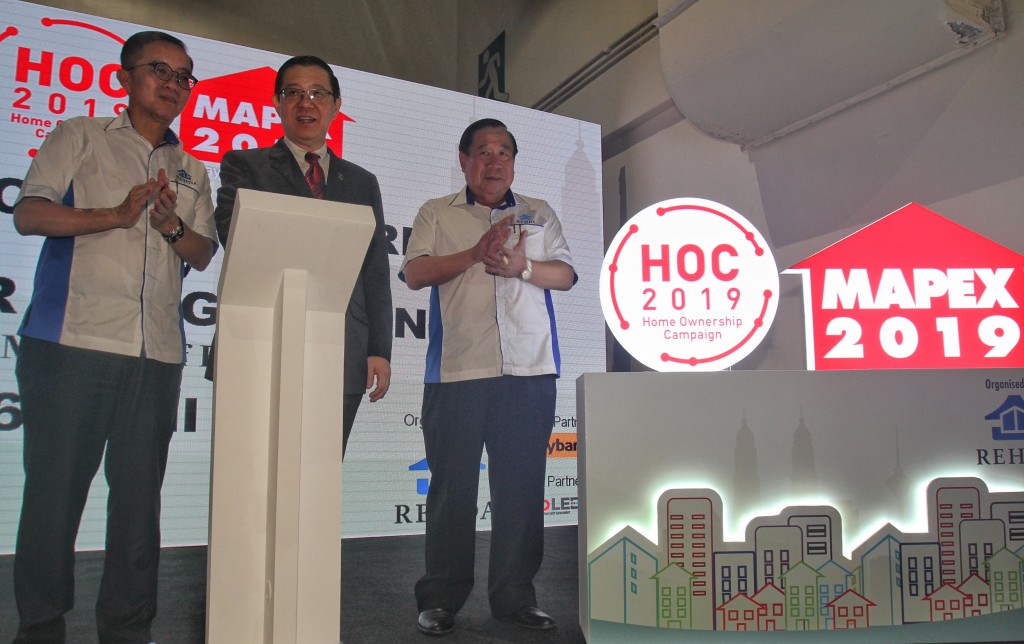More home ownership programmes for the rakyat?
Developers call for an extension as i-Miliki end draws near
By Yanika Liew
Property developers are seeking an extension of the i-Miliki initiative for three more years, subject to the improvement of the economy. The programme would then rely on the realities of ordinary Malaysians, with the flexibility to change as necessary.
To account for the rate of inflation, developers are asking for a 100% stamp duty exemption for owner-occupied properties below RM600,000, from the original RM500,000. Subsequently, the 50% waiver for owner-occupier houses would begin at the purchase price of RM600,000 to RM1,200,000.
The current programme provides home buyers with a 100% stamp duty exemption for owner-occupied properties below RM500,000, with a partial exemption of 50% for owner-occupier houses with purchase prices between RM500,000 and RM1,000,000.
While Covid-19 ushered in a period of instability for the property industry, the pandemic has also pushed the federal and state governments to provide support in the form of new homeownership programmes. But developers feel that the government should help more to ignite the growth of the industry further.
The most prominent example was the Home Ownership Campaign (HOC), which to date was the most successful, implemented to facilitate the growth of the property market. As it ended in 2021, the i-Miliki initiative replaced the HOC, seeking an end to Malaysia’s turbulent economy.
According to the government guidelines, the transaction deadline for the Sale and Purchase Agreement for i-Miliki is no later than Dec 31, 2023, with the last booking date being no later than Jan 31, 2024.
With the strong sentiment to tide over the Malaysian public, developers, agents and homebuyers are watching when the clock strikes midnight on the i-Miliki initiative amidst rising cost of food prices and other necessities.
While many developers are under the impression that i-Miliki will be ending in December 2023, according to the guidelines, the i-Miliki programme will continue for houses priced below RM500,000 until Dec 31, 2025.
“Even before they announced it, there’s already another scheme, which is for below 500,000, that is valid if I’m not mistaken, to 2025. So it does the same thing,” Real Estate and Housing Developers’ Association (Rehda) president Datuk NK Tong said.
“It’s just the same thing, the exemption, so I don’t know why they introduce that… It’s running in parallel, a bit confusing,” he added.
The lack of clarity is a common issue. As developers have pointed out during the roundtable, the effects of the pandemic are still felt throughout Malaysia. While wages are rising, they are rising at a slower pace. Coming out of the pandemic, developers such as OSK Property chief operating officer Seth Lim noted that the public may not be able to pay for the memorandum of transfer for a strata title with depleted cash reserves, creating a more difficult homeownership journey.
“They always say, ah Rehda, you’re always asking for it, where’s the government gonna get the money?” Tong pointed out.
“The government does waive the stamp duty,” he conceded, “But this will increase the volume of transactions, which… more than makes up for it because the government will earn through taxes on the profit of the development and also the spin-off effects.”
Bank Negara reported that the property development business has a 3.5% share of Malaysia’s gross domestic product. As the development industry embarks on projects, industries such as construction, real estate and others engage.
“It’s again, coming back to creating a more robust and resilient economy, because construction and development is a sizeable chunk of the GDP, so that’s one of the reasons we’re doing it, to make sure that as part of our nation building role, we are prepared and ready for what’s coming down the pipe,” Tong said.
As developers brace for the end of the year, i-Miliki acts as an effective programme for those keen on homeownership.
“If you ask your salespeople at ground level, it works. It works, people are interested in that. My only thing is that it’s priced at RM500,000. If you look at Klang Valley ones, most units are RM600,000 plus,” Glomac Bhd chief operating officer Zulkifly Garib said.
According to the Valuation and Property Services Department (JPPH), the median price for homes in Kuala Lumpur stands at RM500,000, while in Putrajaya, the median stands at a whopping RM800,000. Selangor’s median stands at RM430,000, all far above the national affordability line of RM300,000.
Sunway Property central region senior executive director Chong Sau Min reflected on the coming end of the programme, recalling his experience following the Home Ownership Campaign.
“There’s always the problem when it comes to 31st December,” Chong said.
Once the year has ended, he pointed out, people are unable to commit themselves to a higher payment, with the general sentiment of the public being that they have missed the chance for a better deal.
He noted that an option could be to cushion the effect, instead of creating a disruption, gradually decreasing the exemption as the economy begins to stabilise. Coupled with step-up financing programmes, the hope is to allow homebuyers to get their bearings again so their payments would be easier to handle.
While the state would be losing out on the collection of stamp duty with the continuation of i-Miliki, Matrix Concepts Holdings Bhd group managing director Ho Kong Soon noted that the chain effect within the Malaysian economy would be stronger with the programme in place.

Finance Minister Lim Guan Eng officiated the opening ceremony for Rehda’s home ownership campaign – Malaysia Property Expo 2019 (HOC-Mapex 2019).
Reporter YAP CALYN
Accounting for inflation, he pointed out that the maximum price for a 100% exemption could be increased to RM600,000.
“The government does not have much fiscal measure in hand,” FIABCI World Council of Developers and Investors president Datuk Seri Koe Peng Kang acknowledged the agreement at the roundtable.
According to the recent Q2 2023 outlook report by the Malaysian Institute of Economic Research, the government revenue increased to RM76.2bil for Q1 2023, as compared to RM62.8bil in Q1 2022. Combined with stable expenditure, this results in a slightly reduced overall deficit for Q1 2023.
The report noted that continuing to reduce the deficit with the ultimate goal of a balanced budget should remain on the government’s agenda whenever possible.
“I don’t think it needs to be done every year. It’s just that in this particular period, we need the industry to be more resilient. I don’t think the government has much, and you’re looking at the looming recession coming. I think with this thing in place, it will probably build up more sales and more buffer,” Tong added.
Matrix Concepts’ Ho noted that as things continue, development projects have been delayed, leading to late delivery. Due to the lack of funds, some developers delay their projects for four years to five years.
On a brighter note, Bank Negara reported that the Malaysian economy expanded moderately in the second quarter of 2023 in comparison to the first quarter of 2023, and is expected to continue. Both headline and core inflation are projected to trend lower within expectations close to the lower end of the 4.0% to 5.0% range in 2023. This at least gives some hope for the future.
House prices according to state, 2022
| State | Mean | Median |
| WP Kuala Lumpur | 748,625 | 500,000 |
| WP Putrajaya | 1,019,188 | 800,000 |
| WP Labuan | 435,473 | 380,000 |
| Selangor | 555,622 | 430,000 |
| Johor | 403,953 | 380,000 |
| Pulau Pinang | 425,498 | 350,000 |
| Perak | 268,920 | 250,000 |
| Negeri Sembilan | 334,214 | 290,000 |
| Melaka | 280,716 | 250,800 |
| Kedah | 262,961 | 240,000 |
| Pahang | 267,861 | 250,000 |
| Terengganu | 291,384 | 300,000 |
| Kelantan | 260,545 | 253,000 |
| Perlis | 246,225 | 230,000 |
| Sabah | 376,945 | 330,000 |
| Sarawak | 371,991 | 360,000 |
(Source: JPPH)
Source: StarProperty.my
















POST YOUR COMMENTS